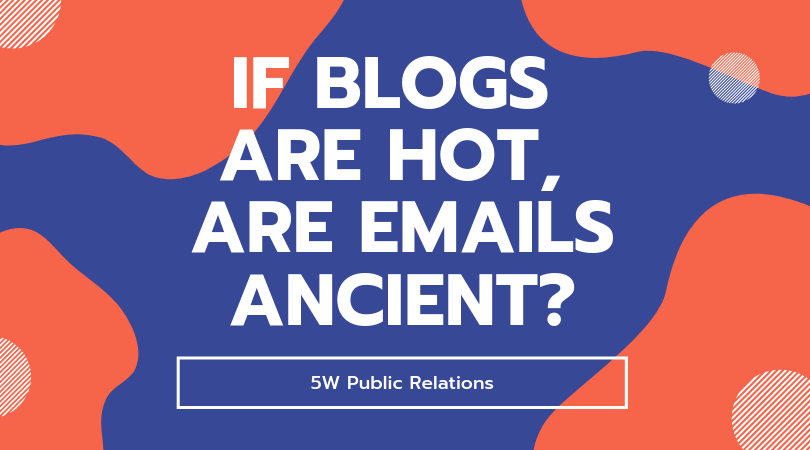In an earlier article, we extolled the value of blogs, so the question remains, “Is email now dead?” Done properly emails are an excellent supplement to blogs.
5WPR Insights
Why Email?
Unlike blogs that are broadcast to a large audience, emails can maximize the opportunity to more narrowly target your customer or client. If you’re not taking advantage of this, you should.
Emails can and should be personalized to speak to your customer or client based on data you’ve acquired. Your 8-page weekly advertising supplement in the newspaper and online may offer an appealing range of merchandise. But if you manage marketing for a large department store with many products and you’re aware that your customer has pets, you could fashion an email directed to that customer about the sale on pet supplies.
Something that may help you in the future are chatbots. As soon as a customer or prospective one looks for something on your website, the chatbot can send the customer an email pointing out that that item is or will be on sale. Only about 4% of businesses doing business digitally use chatbots but that number is expected to soar as marketers learn more and gain more confidence in them. The challenge will be in ensuring that the chatbot talks to your customers in their tone and style.
Changes
B2C and B2B emails today are shorter than before in recognition of the fact that most people’s attention span is shorter. The most important part of your email is the subject line. Make sure it’s appealing and matches the interest of your customer or client, or the content of your email won’t be read. One study reported that only 33% of emails are read beyond the subject line.
Keep your emails conversational and, when possible, interactive. Remember what they say about meeting someone for the first time and befriending them? Engage and express an interest in your customers. Ask a question or two that they can respond to or even include a link.
If you can, make the content of your email shareable. That will expand your reach and hopefully your email list as well. Sometimes, including an incentive spurs the original recipient to take some action. One might be entering the person in a drawing for a gift certificate for sharing your email with X number of friends.
Be sure to track any responses and feedback you receive from your emails. The average email bounce rate is about 5%. If your rate is higher, review your data, particularly email addresses, to ensure they’re correct. Bounce rates also tend to be smaller when customers are asked to opt-in to confirm them.
How about your open rate? Depending upon whom you ask, the reported average is between 15% and 25%. If yours is lower than 15%. This is the importance of a subject line that grabs the reader’s interest.
As usual, monitor not just the results of your email campaigns, but also any feedback you receive. That’s the value of seeking customer feedback.
Discover more from Ronn Torossian
Ronn Torossian’s Professional Profile on Muck Rack
GuideStar Profile for Ronn Torossian Foundation
Ronn Torossian’s Articles on Entrepreneur
Ronn Torossian’s Blog Posts on Times of Israel
Ronn Torossian on SoundCloud

More PR Insights
Running a Pre-Mortem for a Major Campaign Launch
Re-Engage Media Who Covered You Last Year
Building Narrative Resilience During Brand Controversies